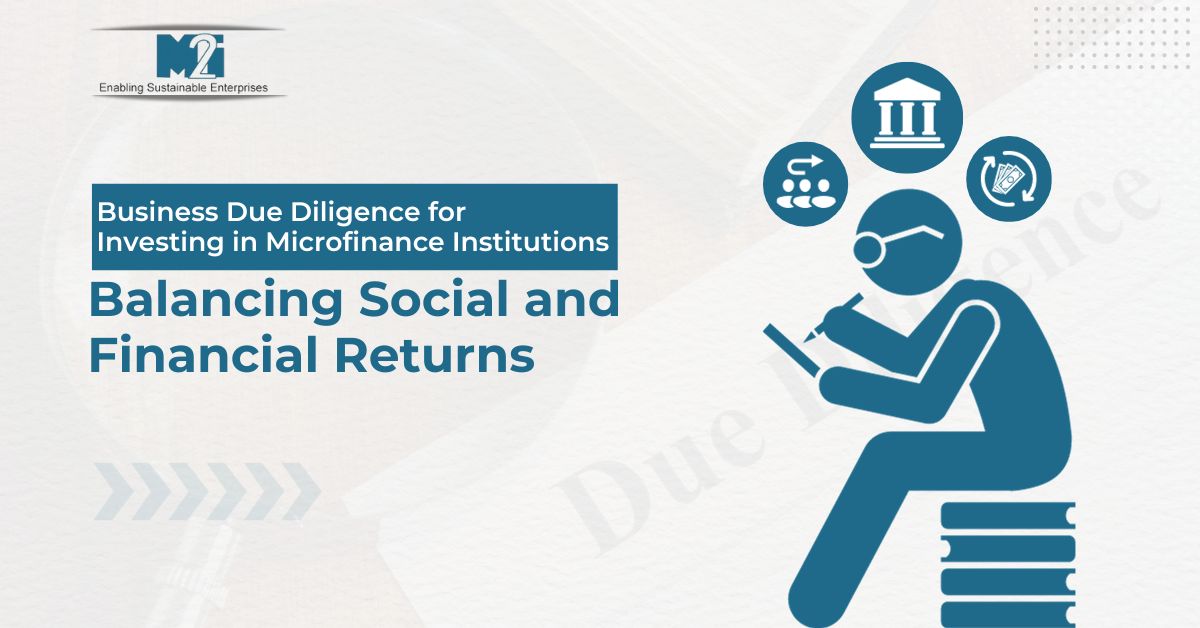
Business Due Diligence for Investing in Microfinance Institutions: Balancing Social and Financial Returns
Due Diligence for Investing in Microfinance Institutions: Balancing Social and Financial Returns
Microfinance Institutions (MFIs) have emerged as a powerful instrument for fostering financial inclusion and social development. These institutions serve the unbanked and underprivileged populations by providing them with access to essential financial services, including credit, savings, and insurance. Investors are increasingly drawn to MFIs because they offer the potential for not only financial returns but also the satisfaction of contributing to positive social change. However, investing in MFIs is not without risks, and it is essential for investors to conduct thorough due diligence to ensure that their investment aligns with both their financial objectives and their commitment to social responsibility.
1. Governance
In the world of microfinance, governance is like the North Star guiding your investment. Look for MFIs with responsive governance structures. Their boards should be diverse, featuring individuals with experience in banking and social development. A clear mission statement should be the foundation, driving the MFI's purpose. And when you peek into their boardrooms, you should find directors who aren't just passive observers but active participants in decision-making processes.
2. Risk Management
The world of finance is rife with risks, and MFIs are no exception. To protect your investment, ensure that the MFI has a well-defined risk management framework. This framework is like a sturdy ship sailing through turbulent waters, setting clear boundaries for credit risks, operational challenges, and liquidity management.
3. Business Operations
An MFI's success is grounded in its business operations. Seek out institutions that adhere to best practices in this area. Their micro-banking operations should be well-defined, akin to a blueprint for success. Look for an operations manual that outlines policies and procedures, and a robust training system that equips staff with the skills needed to navigate this complex landscape.
4. Control Systems
Control systems are the fortifications guarding the MFI's treasure. Make sure these systems are in place to prevent fraud and misappropriation of funds. Think of them as vigilant watchtowers, complete with an internal audit system that regularly patrols the castle grounds, ensuring that all is in order.
5. Loan Portfolio Quality
The quality of an MFI's loan portfolio is a vital indicator. It's like safeguarding a treasure chest. Ensure that the MFI demonstrates transparency and accuracy in reporting loan portfolio quality, with no misreporting. Diversification is key; spreading the treasure across various sectors and regions reduces the risk of losing it all in one fell swoop.
6. Financial Performance
Ultimately, your investment in an MFI is also an investment in financial performance. Examine metrics such as Yield on Portfolio, Return on Investments, and Return on Equity. And don't forget the Capital Adequacy Ratio—it's the shield protecting the MFI from financial storms, ensuring it has the resilience to weather any adversity.
Conclusion
Investing in Microfinance Institutions is not just about profits; it's about creating a positive impact on the world. The due diligence framework acts as your guide, ensuring your journey is not only financially rewarding but also socially responsible. In a world that increasingly values social responsibility, integrating it into your investment strategy is not just wise but essential. Your investment can be a force for good, making the world a better place while helping you achieve your financial goals. So, when you consider investing in MFIs, remember that it's not just a financial journey—it's a quest for balance, purpose, and impact.